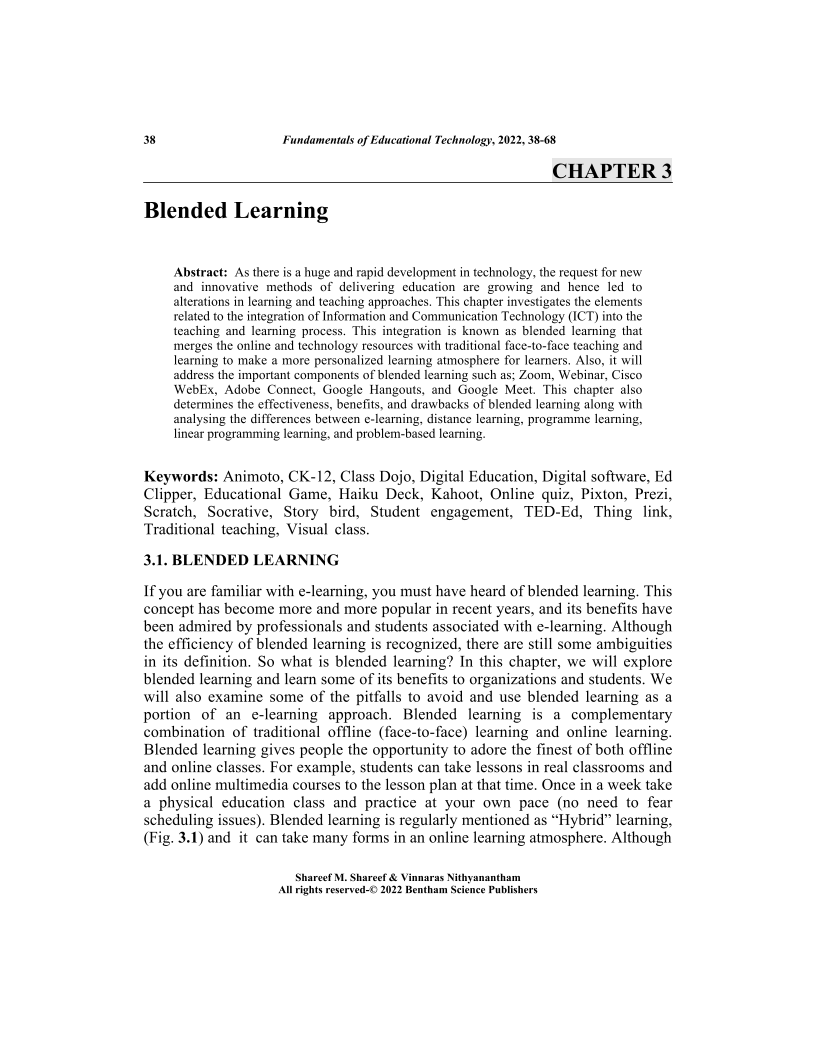Blended Learning

- Authors: Shareef M. Shareef1, Vinnaras Nithyanantham2
-
View Affiliations Hide Affiliations1 Department of Software and Informatics EngineeringCollege of EngineeringSalahaddin University ErbilKurdistan Region of Iraq 2 Department of General EducationCollege of Education and LanguagesLebanese French University ErbilKurdistan Region of Iraq
- Source: Fundamentals of Educational Technology , pp 38-68
- Publication Date: April 2022
- Language: English
Blended Learning, Page 1 of 1
< Previous page | Next page > /docserver/preview/fulltext/9789815039832/chap4-1.gif
As there is a huge and rapid development in technology, the request for new and innovative methods of delivering education are growing and hence led to alterations in learning and teaching approaches. This chapter investigates the elements related to the integration of Information and Communication Technology (ICT) into the teaching and learning process. This integration is known as blended learning that merges the online and technology resources with traditional face-to-face teaching and learning to make a more personalized learning atmosphere for learners. Also, it will address the important components of blended learning such as; Zoom, Webinar, Cisco WebEx, Adobe Connect, Google Hangouts, and Google Meet. This chapter also determines the effectiveness, benefits, and drawbacks of blended learning along with analysing the differences between e-learning, distance learning, programme learning, linear programming learning, and problem-based learning.
-
From This Site
/content/books/9789815039832.chap4dcterms_subject,pub_keyword-contentType:Journal -contentType:Figure -contentType:Table -contentType:SupplementaryData105

